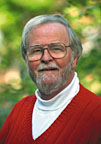When you start thinking about it, formulas become painfully close to painting by numbers. You are imposing a preconceived outline on a scene. What's wrong with those paintings by number? There's no subtlety, no ambiguity. Life is saturated with subtlety your formulas may miss. Examine your formulas for: a headshot, a riot, or a football game, for instance. Formulas can guarantee success in the varied situations of daily photojournalism but they are a trap. You often join a situation late. Reporters, editors and subjects of photos--and maybe onlookers--often know a lot more than you do. You haven't had the time to discover what's visually unique. Formulas get you through. Formulas work in the short run because you are a hero, can be depended on to come back with something. They are deadly in the long run, though, because you always come back with something--a variation of the same theme. This year's hero can become next year's has-been. If I have irritated with these thoughts, ask yourself this question: when you shoot, are you trying to improve the formula, or are you looking for non-formula? This is a trick question because you should be doing both. Some important photos are cliches, even when they were made. They over come the cliche because they tell a great truth. Other photos are important because they are a visual invention. The point of this introspection is to invent a perspective beyond catch or copy images. You must perform daily, but you must grow, discover new vision for tomorrow. The English language makes this subtle difference between writers and photographers: writers write ABOUT a subject. Photographers photograph IT. Writing ABOUT something implies writer participation, as interpretation. Can you photograph ABOUT your next assignment? The journalism system encourages the creation of formulas. The newsroom is tolerant of formulas. Photojournalists often chafe at creating another cliche. Ordinary weather shots were invented by photographers. Now, it's a burden to produce them over and over. Linguist say, "To name something is to change it." They mean before "weather shots," photographers explored their area. The first one was not a "weather shot." It was simply the best new view a creative photographer could find. Ordinary weather shots were a wonderful invention. They got a documentary report-of-the-day into the news that was not a formula news event. Naming becomes quickspeak in the newsroom. Naming them "weather shots" made them a formula. By job description, editors deal with things that can be named. Photos can be discussed but the key strength of photography is non-verbal. An editor doesn't deal with "a person on the street who is speaking out against various sins of our society." An editor deals with a "protester." Formulas are named and the name is used to order another example for today's news. Try this experiment: look for news without a name. Look for that element that can't be discussed in advance. The first weather shot was not ordered, it was a non-formula report on something happening. A trend is developing somewhere right now. Sometime in the future it will be a formula and have a name. News is the biggest formula. It's a game where journalists write the rule book for each day. "Important" and "unusual" are descriptions of some news, but ultimately, we redefine news every day. An hour before deadline, everything we have becomes news. "That's news" is the excuse to chase all that convenient stuff. My point: news is not some stringently defined substance like iron ore. Mining companies can't redefine iron ore on a slow ore day. Journalists can and do redefine their product every day. Creativity requires a high tolerance for ambiguity. If formulas are your only tool, someone's going to come along and blow you out of the water. A journalist¹s key strength is his or her history of gathering and delivering reliable accounts of the day. Which part of today are you missing because it's not part of your formula? Tom Hubbard
|
